The Sony DSC-R1 is one of many cameras on a list of ‘I would have liked this when it was new, but I couldn’t justify or afford it’, but I did manage to track down one on eBay last year at a reasonable price. It seems like a ‘low mileage’ example and in very nice condition.
It is solidly made, with excellent ergonomics – nice weight and balance. In some ways the size and weight reminds me of using the Bronica ETRS medium format camera I owned in the 80s, equipped with the Speed Grip. With the rechargeable battery and Compact Flash card on board it tips the scales at 1,038 grams, so not a lightweight. I’m writing this from the perspective of someone who started photography on film in the 1980s and bought a 2.7-megapixel Nikon D1 DSLR in 2001.
This impressive Sony ‘prosumer’ bridge camera was announced in 2005 with a fixed Zeiss Vario-Sonnar f/2.8-4.8, 24-120mm equivalent lens (actual focal length is 14.3-71.5mm) and a relatively large 10.3-megapixel APS-C (21.5 x 14.4mm) CMOS sensor at a time when many DSLRs sported six- or eight-megapixel sensors. At the camera’s launch one reviewer said the lens alone was worth the asking price. It was the first camera with an APS-C sensor to offer Live View, too.
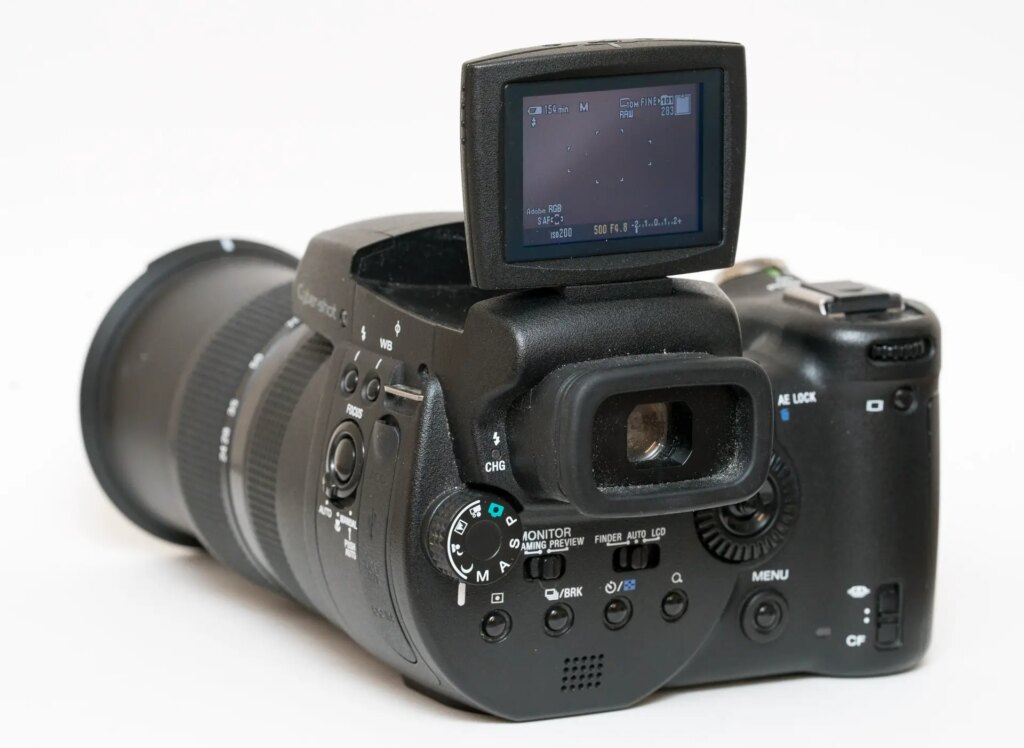
The Sony DSC-R1 comes from a long line of high-end Sony digital cameras with impressive zoom ranges, including the DSC-F707, with a 10x zoom, and the R1’s predecessor the DSC-F828 which had an 8x zoom, 28-200mm equivalent, but with a much smaller sensor, measuring 8.8 x 6.6mm.
The R1’s zoom range makes it suitable for most subjects and is a great performer even at wide apertures. The relatively large sensor and f/2.8 aperture at the wide end means it is possible to successfully defocus backgrounds. It even has a very useful macro setting. Its leaf shutter operates from 30-seconds to 1/2000 plus time setting and can be used silently or with a synthesised shutter sound.
The camera features an electronic viewfinder as well as a hinged two-inch 134,000 dot LCD screen, mounted on top of the viewfinder, which rotates and can be used flat for low angle shots, though it doesn’t tilt backwards far enough for shots with the camera held high above your head. There is no optical viewfinder or reflex mirror as in a DSLR, so no mirror slap.
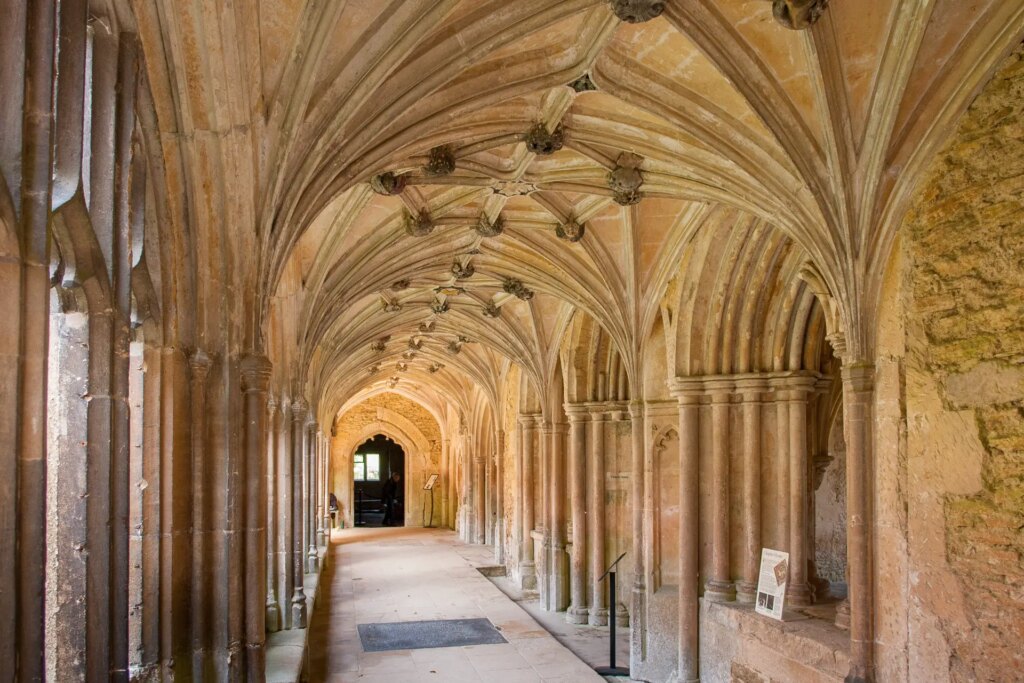
Autofocus is contrast detect but works well enough in good light but struggles as light levels fall. By today’s standards the viewfinder is low resolution and reminds me of that of a Sony DCR-VX2000 MiniDV camcorder I owned at the time. The camera is from the pre-image stabilisation era, and neither is it able to record video despite its predecessor, the DSC-F828, being able to record 640 x 480 videos at 30 fps.
Recording media is either Compact Flash (Type I or II) or Sony’s Memory Stick Pro. You need to choose one or the other as it isn’t able to write simultaneously to the cards. The Sony DSC-R1 does, however, offer the choice of JPEG, RAW, or JPEG and RAW simultaneously. For this test I have only used the R1 set to RAW mode, so cannot comment on the quality of the jpegs, auto white balance or noise reduction as I haven’t tested them.
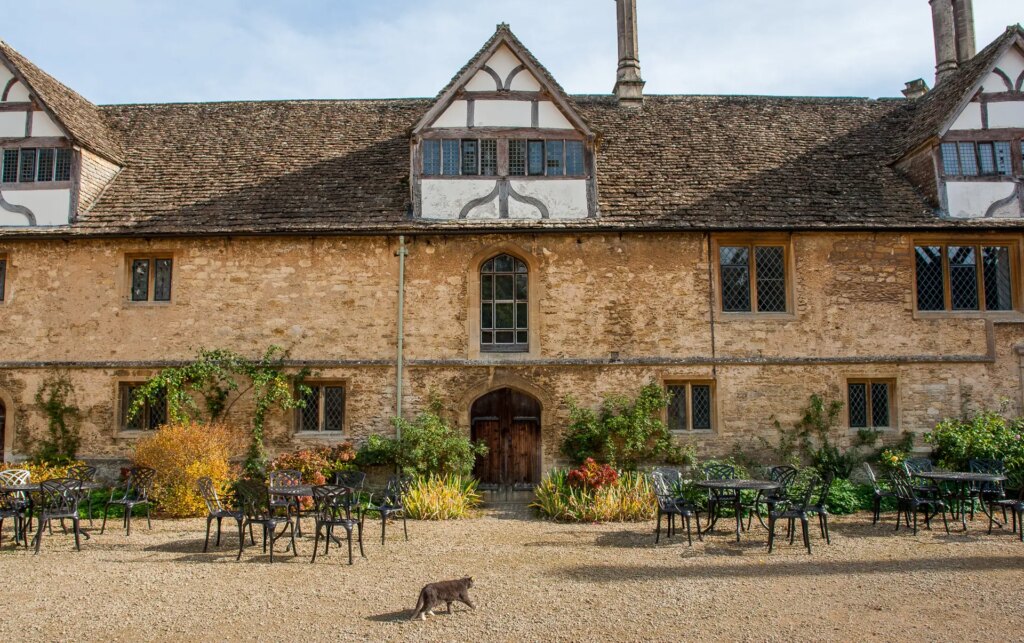
RAWs are recorded as .SR2 files (unlike the current Sony .ARW files) and work perfectly in the latest version of Adobe Lightroom Classic. I found that the dynamic rage of the files is (not unexpectedly) significantly less than the current generation of Sony’s mirrorless cameras, including my A6600 which also features an APSC sensor. Similarly, low light performance can’t match today’s standards.
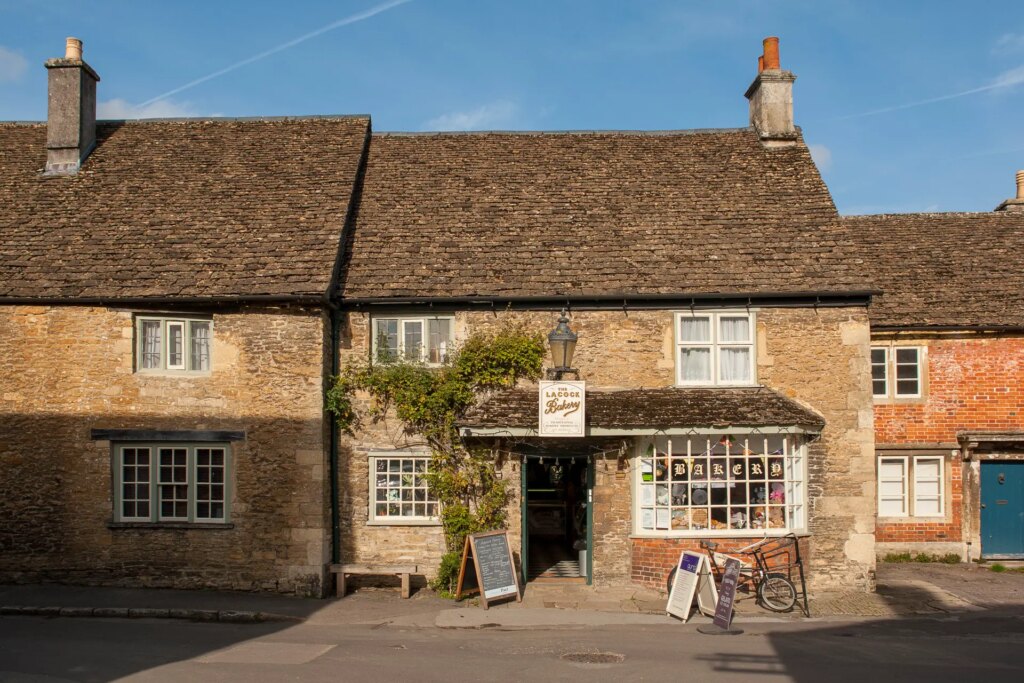
In the autumn I spent a day with the Sony DSC-R1 at Lacock Abbey in Wiltshire, owned by the National Trust and former home of William Henry Fox Talbot, photographic pioneer and inventor of the negative/positive photographic process in the nineteenth century. I took pictures indoors and out, around the village and Abbey, used in many movies including the Harry Potter films. Noise becomes apparent in the shadow areas at 800 ISO but has the appearance of film grain. I took a picture inside a camera obscura in the grounds of the Abbey and needed to set 1600 ISO – at this level colour noise is more apparent and becomes even more apparent if the shadows are lightened in post processing.
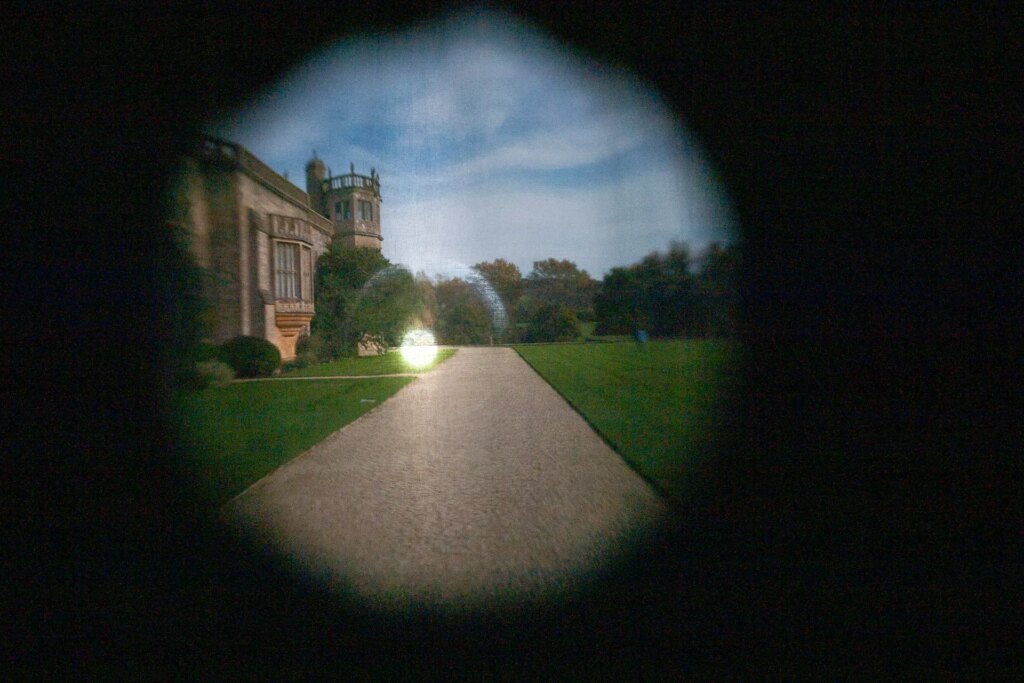
At the base 160 ISO noise is well controlled and images have pleasing colours and range of tones. In high contrast areas there is some evidence of chromatic aberration, with a green fringe on some edges, though this can be corrected in Lightroom when using RAW files.
The Sony DSC-R1 and it’s useful lens proved ideal for a day out, the focal range covering pretty much every situation and the macro setting letting me take a photo of a backlit cobweb in the Abbey Cloisters. The dynamic range was pushed to its limit when I took a photo of the famous Oriel Window, but the lens produced a fashionable ‘starburst’ from the point source of the sun in the upper right.
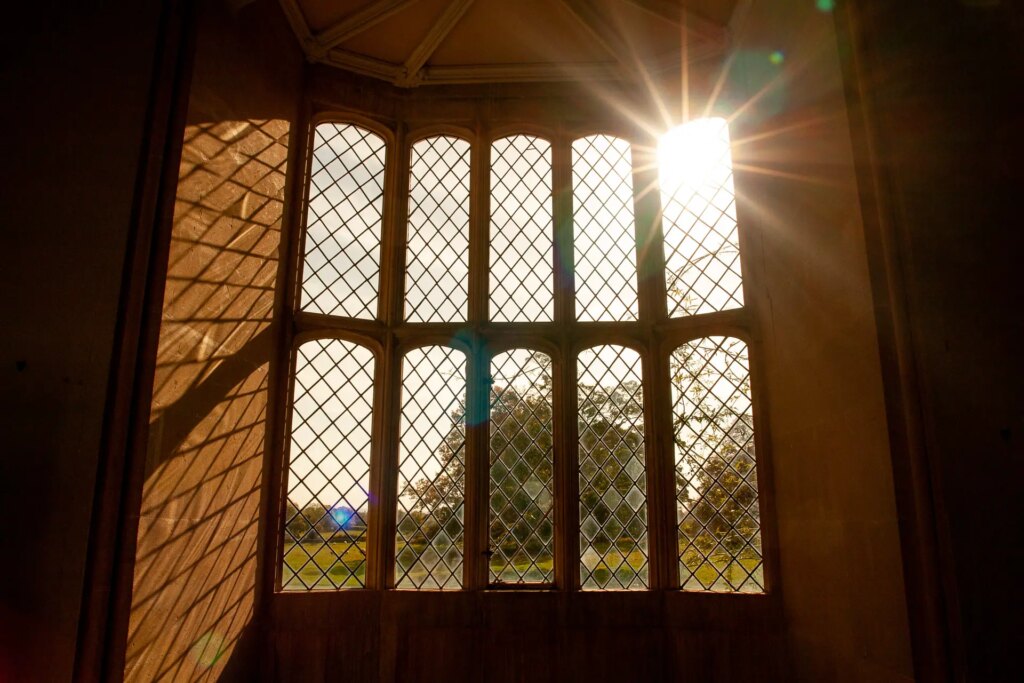
It takes around one second to be able to operate the camera after turning the on/off switch around the shutter release, not an issue in real world operation. Similarly, the shutter lag that plagued early consumer digital cameras is negligible (I have memories of trying to photograph my young daughter with a Canon Powershot G5 and she had moved out of the frame before the shutter had fired).

However, the big downside for me is the length of time it takes to write RAW files as the camera has a fairly small buffer compared with modern cameras. I’ve been using a Kingston 8GB card rated at 133x (though I’m not sure if this is read or write speed). After taking one photo the tally lamp on the back of the camera remains on for nine seconds. Taking a second photo in RAW in quick succession makes the camera display an ‘Access’ graphic and bar graph on the LCD, accompanied by a pause of nine seconds until you can take another photo. On the plus side this concentrates one’s mind on being more selective about what you shoot, but if something happens in front of you that you want to photograph it is intensely irritating.
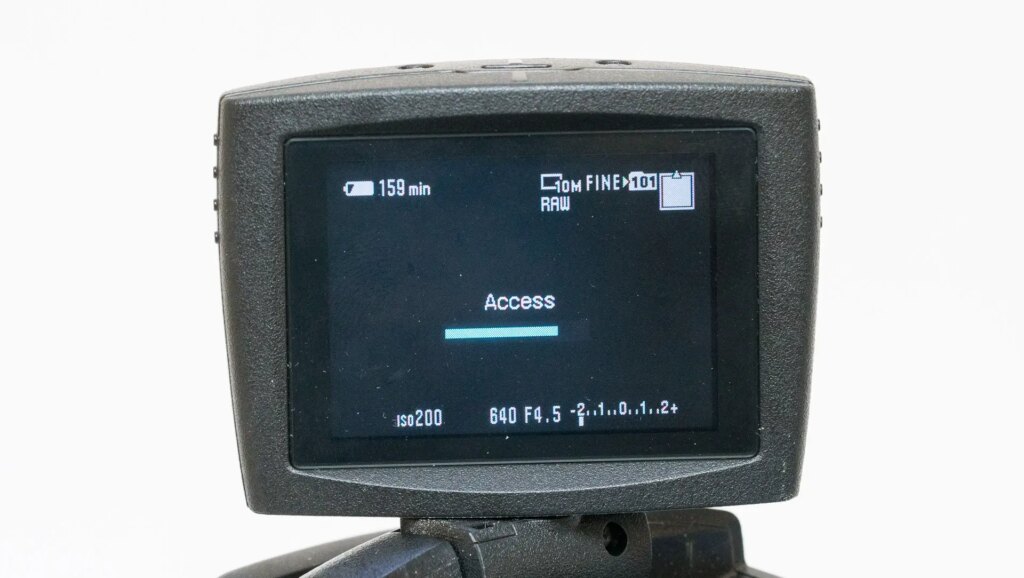
The rechargeable NP-FM55H battery in my camera isn’t the original Sony, but a third party DTSE 2300 mAh replacement, so the original may not have made it through the 16 or 17 years since the Sony DSC-R1 was launched. However, it has impressive longevity and I’ve only charged it a couple of times since I bought the camera – the downside being that the charger has to be plugged into the camera, meaning you can’t take pictures until it has charged – though there may be aftermarket external chargers available as the battery was also used in Sony camcorders of the time.
The Sony DSC-R1 is an impressive piece of kit and seems to have spawned the subsequent range of Sony bridge cameras right up to today’s 20-megapixel Cyber Shot RX10 IV which sports a Vario-Sonnar 24-600mm (equivalent) lens and has the ability to shoot 4K video, albeit with a smaller 1”-type sensor measuring just 13.2 x 8.8mm but with a host of modern features including wi-fi connectivity which is lacking on the R1.

I haven’t had call to use the built-in flash in anger, but test shots around the room show the exposure to be very accurate, plus there is a hot shoe on the handgrip with pins for a dedicated flash – the contemporary Sony HVL-FX32X has a tilting head to allow for bounced flash and can be set to front or rear curtain sync via the camera menu.
There was also a supplementary lens attachment, the Sony VCL-DEH17R, which offered a 1.7x increase in focal length, taking the longest end of the lens to around 200mm. Contemporary reviews couldn’t avoid the fact that the R1 was limited to one fixed lens whilst a similarly priced DSLR had the option of using anything from extreme wide angles through to super telephoto lenses, but to me this is missing the point – the R1 is a camera with a custom-made, high quality Zeiss lens, and as mentioned at the time, doesn’t suffer from dust spots on the sensor from lens changes as would a DSLR.

Image quality out of the Sony DSC-R1 is comparable or better than its contemporaries and seems to still hold something of a cult following. The lens delivers fantastically detailed results and has a great zoom range. Aside from the slow write speed for RAW files the camera’s performance and 10-megapixel files make it eminently usable, almost two decades since its launch.
Thanks for reading, you can find me on Flickr and Instagram
Share this post:
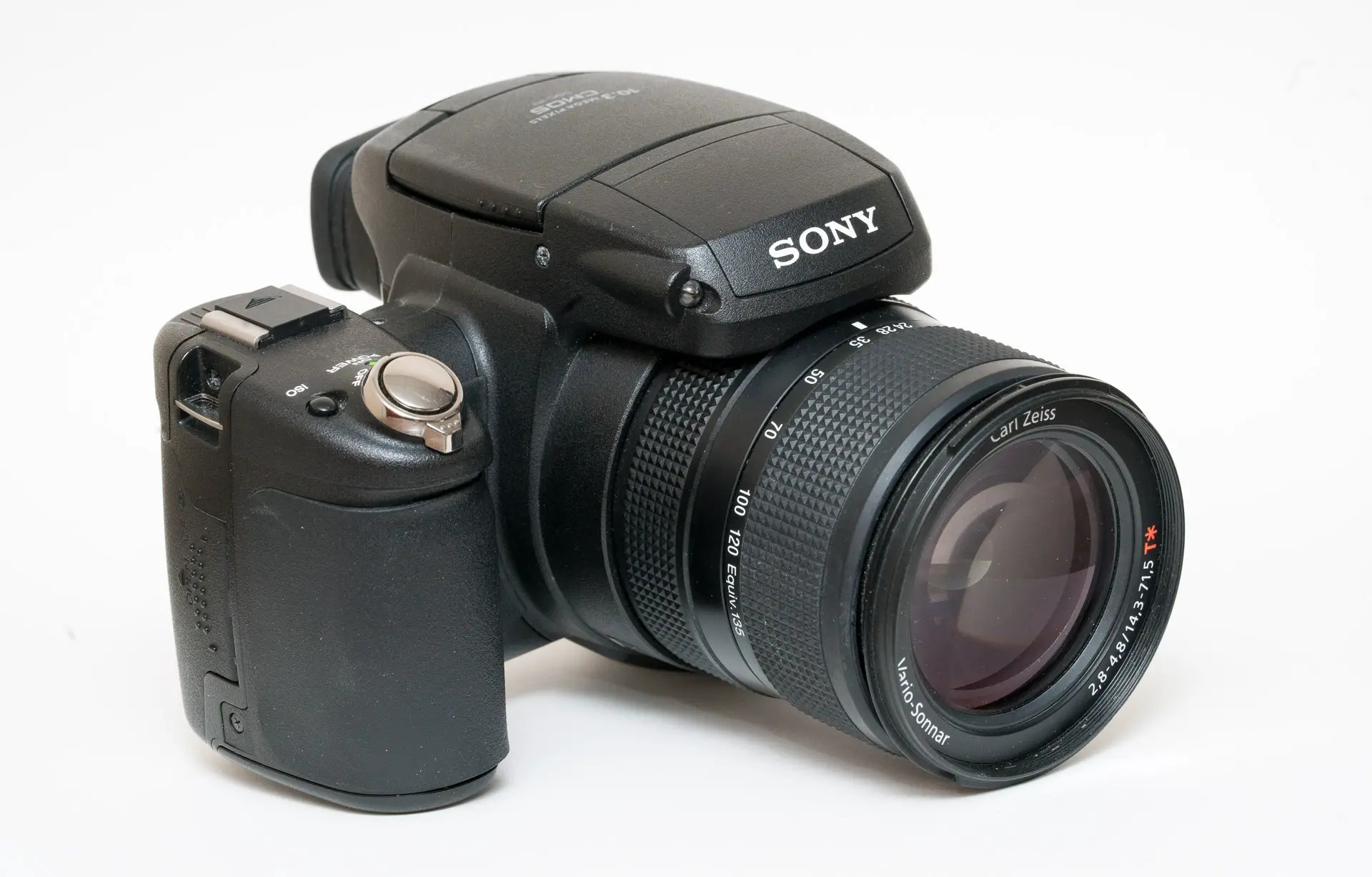



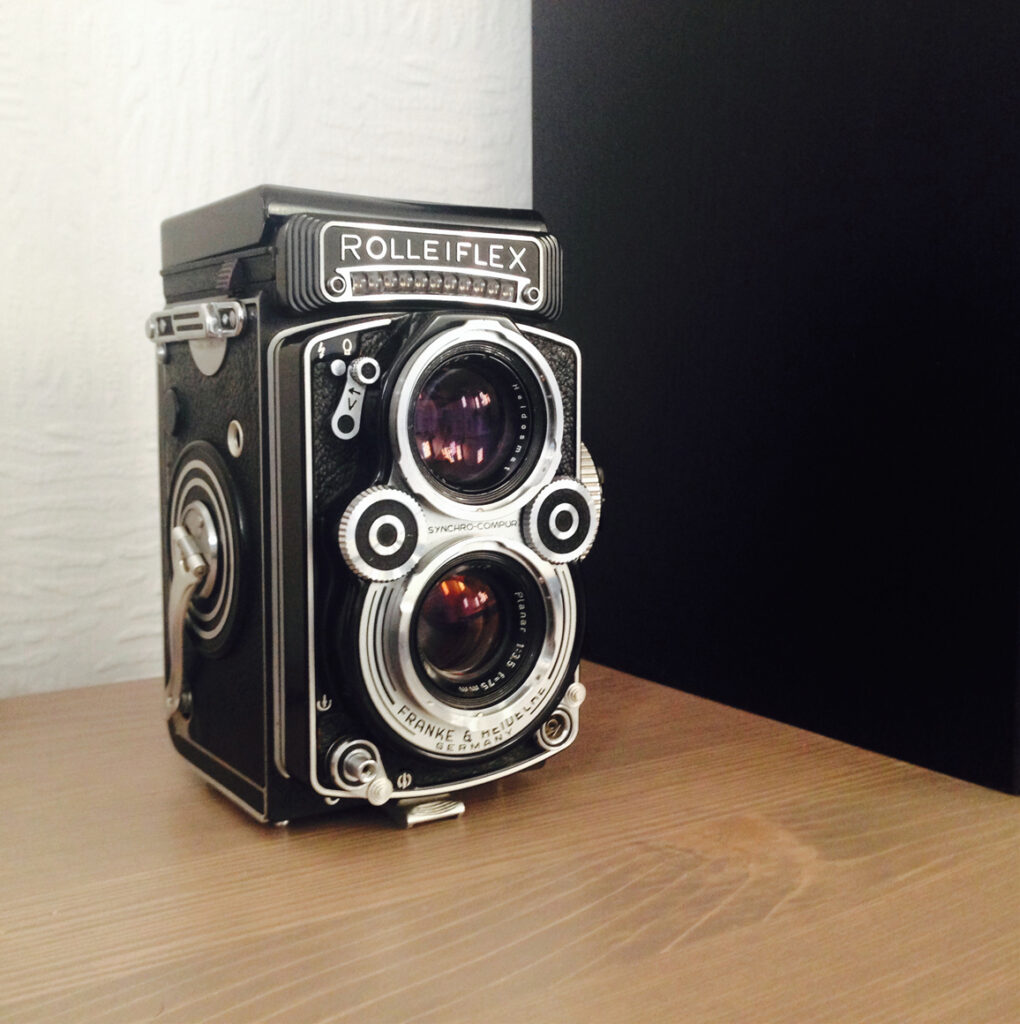




Comments
Robart on Sony DSC-R1 Review – A Surprisingly Usable Vintage Digital Camera – By Matthew Bigwood
Comment posted: 06/03/2023
Comment posted: 06/03/2023
Ibraar Hussain on Sony DSC-R1 Review – A Surprisingly Usable Vintage Digital Camera – By Matthew Bigwood
Comment posted: 06/03/2023
Enjoyed it! Nice photos with good tone and colour. I remember when it was released and was very impressed! I know it was a purely Sony camera and continued its relationship with zeiss and before the acquisition of Konica Minolta. These go for about £100 on eBay
Comment posted: 06/03/2023
Bob janes on Sony DSC-R1 Review – A Surprisingly Usable Vintage Digital Camera – By Matthew Bigwood
Comment posted: 06/03/2023
The same battery was used in Sony's A100 (a KM5d with a 10 mp sensor) and the camera is compatible with the batteries Sony used in later Alpha models - I can confirm that the chargers from those later cameras will take the battery.
Comment posted: 06/03/2023
Glad Nicolae Parau on Sony DSC-R1 Review – A Surprisingly Usable Vintage Digital Camera – By Matthew Bigwood
Comment posted: 06/03/2023
Yes it was slow, above iso 400 it was grainy as hell, slow to focus in bad light, but those colours where very uncommon for Sony, the red's are not blown out like they're whole lineup of cameras did untill the mirrorless era.
Regarding the charging, i remember you could use the camera while it was pluged into the mains adapter, being a favourite for studio work. But i believe it cannot charge the battery at the same time.
moromi-ken on Sony DSC-R1 Review – A Surprisingly Usable Vintage Digital Camera – By Matthew Bigwood
Comment posted: 06/03/2023
Comment posted: 06/03/2023
Kodachromeguy on Sony DSC-R1 Review – A Surprisingly Usable Vintage Digital Camera – By Matthew Bigwood
Comment posted: 08/03/2023
Jim Scheffler on Sony DSC-R1 Review – A Surprisingly Usable Vintage Digital Camera – By Matthew Bigwood
Comment posted: 19/03/2023
Comment posted: 19/03/2023
Peter White on Sony DSC-R1 Review – A Surprisingly Usable Vintage Digital Camera – By Matthew Bigwood
Comment posted: 23/06/2023
I may be wrong but I think it differs from DSLRs in that the viewfinder and the screen display what the processor is going to send to the memory card, not just what is seen through the lens. This means that I can 'live' adjust the aperture and shutter speed in the viewfinder image without going through the review rigmarole. OK it is rather slow but not a problem in my case.
Another nice feature for me who does not use it very often is that it holds its battery charge for weeks.
I remember being so impressed that when it was discontinued in 2006 and the price plummeted I bought a spare which I have never used.
Comment posted: 23/06/2023